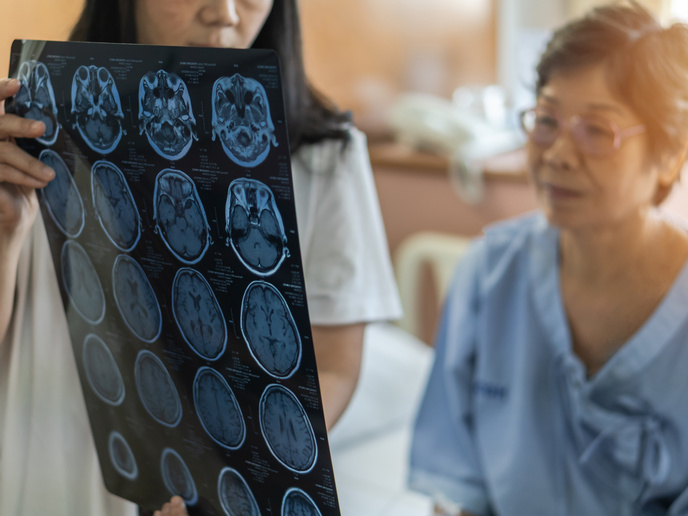A wearable device that helps paralysed patients walk again
One in five people in the European Union experience a stroke at some point in their lives, and half of all strokes lead to paralysis of one side of the body, called hemiparesis. There are around 550 000 hemiparesis cases per year in the EU, with no known cure. Treatment focuses on minimising further loss of body function and reducing pain, muscle regression or spastic paralysis due to reduced mobility which can increase dependence on others and cause inability to work. The EU-funded MOVEAID project has now developed a novel wearable device that helps paralysed patients to walk again by sending out small electrical impulses to correct movement. “Paralysed patients cannot feel movement in their body so they cannot remember a movement. With a signal such as an electrical impulse, the movement can be changed,” says Anna Vonnemann, founder of Berlin-based start-up ReMoD(opens in new window), which received a Horizon 2020 grant to develop the device to the stage where it can be brought to market. “The electrical impulse goes direct to the vegetative nervous system which is not damaged in paralysed patients, so the patient can notice it,” Ms Vonnemann says. The autonomic nervous system (also known as the vegetative nervous system) controls the internal organs and can function even with a patient in a vegetative state. Worn as a vest or a belt, the device the size of a large smart phone sends out signals that, in effect, mimic the communication between the brain and the musculoskeletal system that is disrupted with paralysis. Using physical memory to correct movements Sensors in the device measure tiny body movements. Small ‘incorrect’ movements that hamper mobility are reported back to the user using electrostimulation which prompts the user to reflexively correct the movement. “With the vegetative nervous system there is an automatic reaction,” says Ms Vonnemann. “ReMoD stands for Remember Motion Device. So, largely unconsciously, patients develop a memory of the corrected movement.” “The physical memory is not as perfect as a normal person’s, but better than expected,” says Ms Vonnemann who developed early prototypes of the device to help her daughter Dindia Gutmann to walk normally. Now 25 years old, Ms Gutmann was born with hemiparesis having suffered a stroke in the womb. Using biofeedback to mimic how the brain controls the process of walking, combined with physiotherapy and mobility training, hemiparesis patients can relearn to walk with a normal gait. The EU-funded trial on a small group of patients in Berlin showed the device functioned well and was also effective in treating some other conditions, such as scoliosis or curvature of the spine, which can affect proper mobility. The current prototype includes easy-to-use software that can be programmed by medical professionals for different medical conditions. Smart but easy to use The device patent includes its use to deliver signals to the muscles which expands its use to cover other conditions, though these have not yet been clinically tested. EU funding also helped develop a ‘smarter’ version, so the device can be monitored. “It is a big help if the device is connected to the internet so the therapist can see in real time what the patient is doing,” Ms Vonnemann says. The device has also been made more secure so that it cannot be hacked. “But we have deliberately kept the device easy to use so that a patient can put it on and calibrate it to adapt it to the body’s sensitivity” she says. “It has just three types of buttons – on-off, calibration and intensity. This is important because many patients also have brain problems and difficulty moving their fingers.” ReMoD has applied for approval from the German authorities for use as a medical device so that it can be in full production by 2020.







